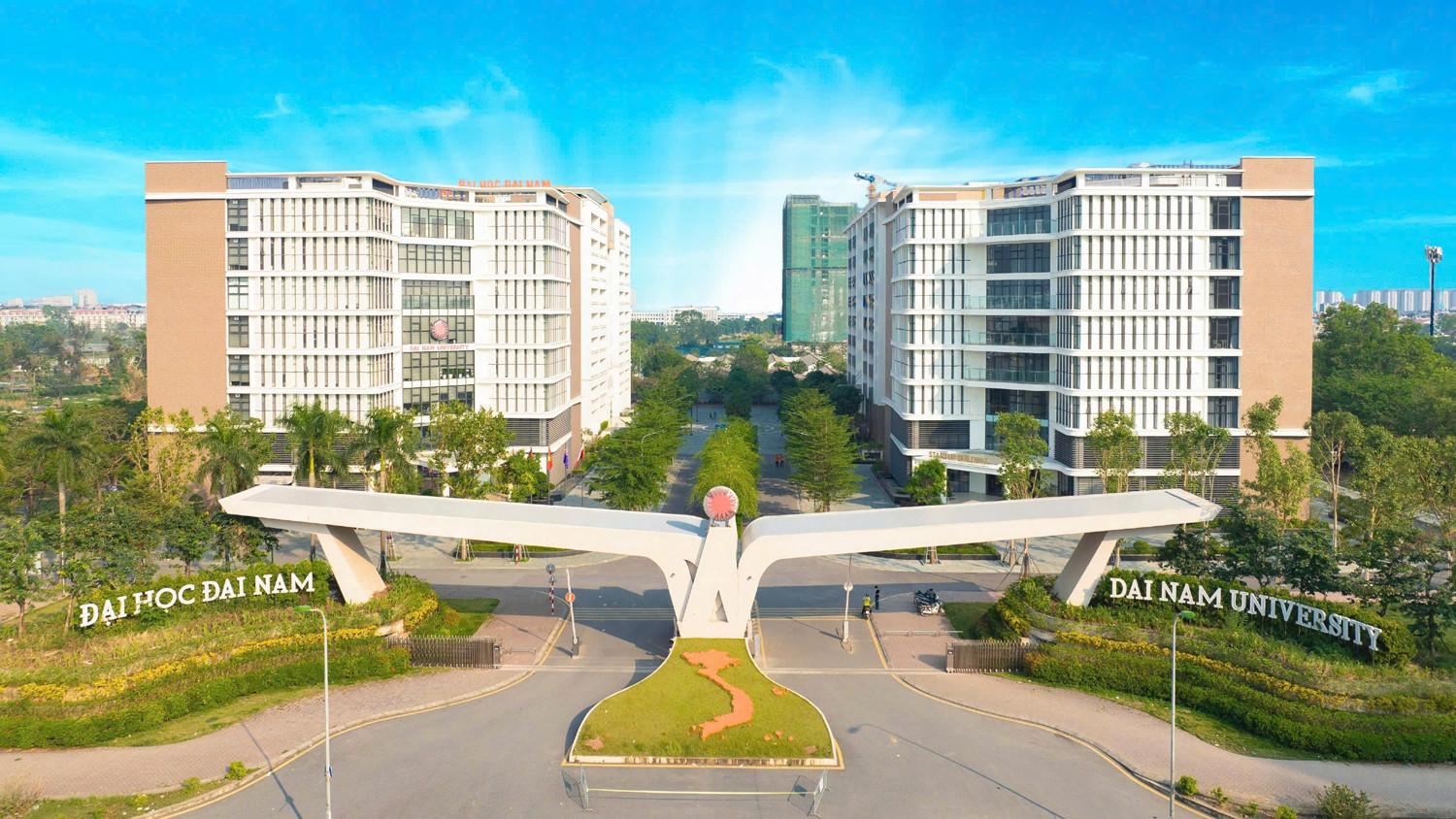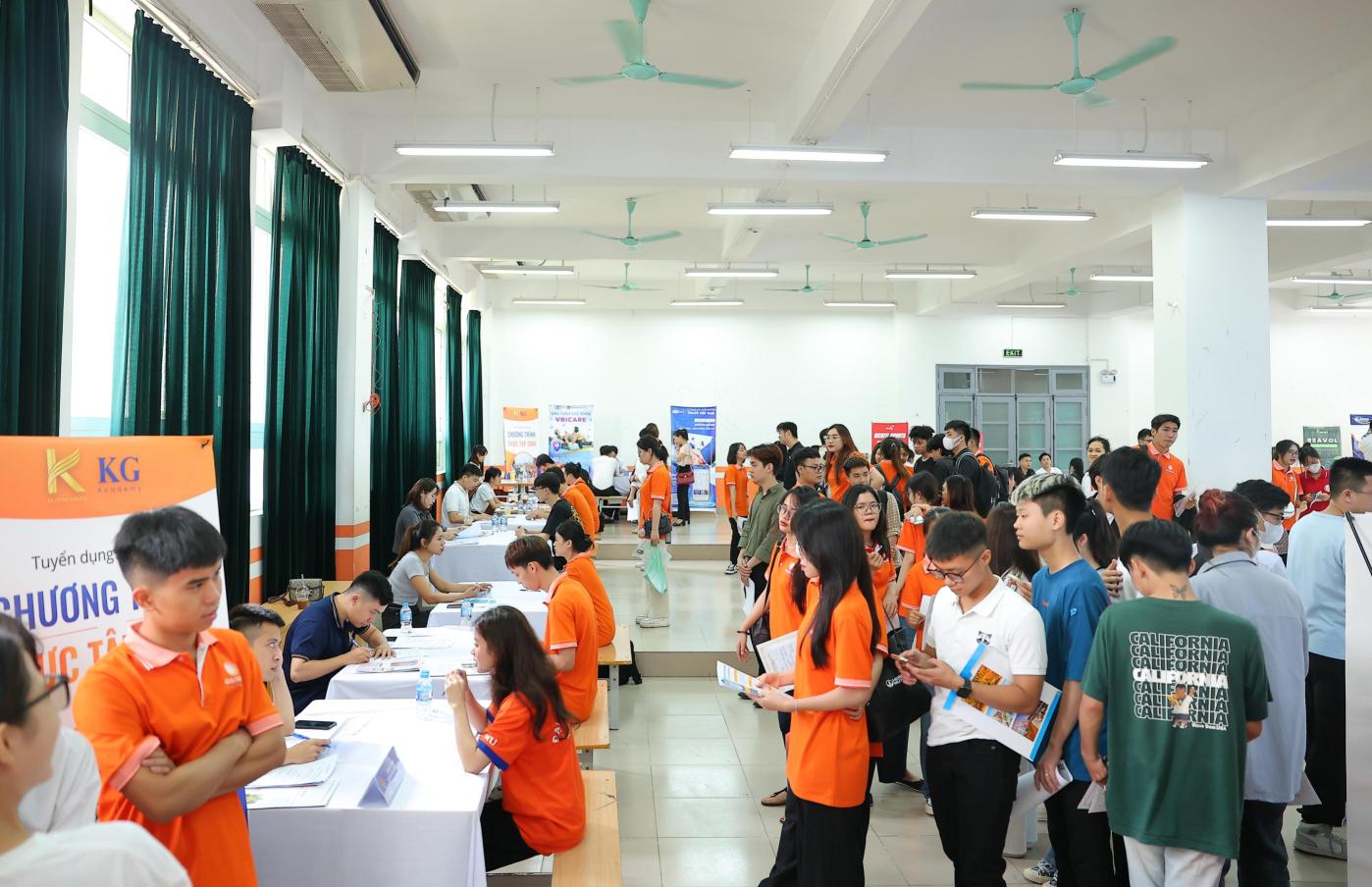Panorama World Magazine published an article by Associate Professor, Dr. Dinh Cong Tuan - Director of DNU Institute of International Research
Posted date 18/02/2020
9.251 view

Panorama World Magazine (a special issue of People's Public Security Magazine) published an article by Associate Professor, Dr. Dinh Cong Tuan - Director of the Institute of International Studies, Head of the Department of Scientific Research - Dai Nam University.
The World Panorama Magazine (a special issue of the People's Public Security Magazine) published an article by Associate Professor, Dr. Dinh Cong Tuan - Director of the Institute of International Studies, Head of the Department of Scientific Research - Dai Nam University. We would like to quote the original article.
The open door of the future of the European Union
2019, the last year of the second decade of the 21st century, witnessed the ups and downs of the EU in terms of economy, politics, national security and defense... At the same time, the EU also introduced development trends in 5 years with profound reforms to regain the trust of more than 500 million EU people and create a new position for the EU in the international arena.
EU economy in 2019 – a picture still full of dark colors
In the context of the world economy in 2019 continuing to face many risks, not only from the US-China trade war, but also from the UK's exit from the European Union, known as Brexit, and geopolitical tensions. Global trade has stagnated, leading to economic activities in most major economies slowing down, uncertainties still exist, threatening the outlook for 2020.
In the context of the world economy in 2019 continuing to face many risks, not only from the US-China trade war, but also from the UK's exit from the European Union, known as Brexit, and geopolitical tensions. Global trade has stagnated, leading to economic activities in most major economies slowing down, uncertainties still exist, threatening the outlook for 2020.

Assoc.Prof.Dr. Dinh Cong Tuan - Director of the Institute of International Studies, Head of Scientific Research Department - Dai Nam University.
After 10 years of global economic and financial crisis (2008) and European sovereign debt crisis (2009), the EU economy has gradually recovered, but there are no signs of strong revival. GDP growth of the entire EU in 2017 reached 2.5%, in 2018 reached 2.0%, forecasted to reach only 1.1% in 2019, and reach 1.2% in 2020.
In the Eurozone, economic growth remains weak, reaching only about 0.2% in the third quarter of 2019. Figures show that the region's economy is still facing many difficulties in the fourth quarter of 2019. Therefore, on September 12, 2019, the European Central Bank (ECB) had to cut the deposit interest rate from -0.4% to a new record low of -0.5%, and restart the bond purchase program with a scale of 20 billion EURO/month, since November 2019 to support Eurozone economic growth and push up inflation.
Eurozone inflation in September 2019 was only 0.8%, down from 1% in July and August 2019. The composite purchasing managers index (PMI) in September 2019 was 50.1 points, down from 51.9 points in August 2019. There were only two rare bright spots for the EU economy: (1) industrial production in August 2019 increased by 0.4% compared to July 2019; (2) the unemployment rate in August 2019 decreased to 7.4%, the lowest level since May 2018.

Brexit continues to be an unfinished issue for the EU in 2019.
For member economies, Germany's leading economy grew by only 0.4% in 2019, forecast to reach 1% in 2020 and 2021; Italy's economy had the lowest growth rate in the EU in 2019, reaching 0.1%. Spain's economy recovered fastest in the EU, reaching 1.9%, but still much lower than the forecast level of 2.3% four months ago.
In summary, in 2019, the GDP growth of the whole bloc was low; the future of the Eurozone was uncertain; the level of bad debt was high in some member countries, especially in Southern European countries; economic growth was uneven in member countries; low inflation, poor purchasing power, etc. The EU economy can be summarized with the phrase "4 lows" as follows: Low growth; Low trade - investment; Low interest rates and Low inflation. However, the EU in 2019 also had some bright spots such as industrial production tended to increase, unemployment rate dropped to the lowest level in the past 10 years.
EU security and politics in 2019 – complex developments, unpredictable consequences
The EU's security and political issues in 2019 can be summarized in the following comments: the migration crisis, the Brexit crisis, the crisis of populism, extreme nationalism... have led to a crisis in the development model in the present and the future.
Since 2015, more than 20 countries in the world, especially those in Africa and the Middle East, have sought every way to reach the promised land of Europe in search of work. They organize illegal migrations by all routes to the EU, causing negative consequences for the EU. In 2019 alone, the number of migrants crossing the Mediterranean to the EU was about 78,826 people. The consequences of the influx of migrants to the EU have caused deep divisions and disagreements in how to deal with the consequences for the EU. EU member states have disagreed on the allocation of migrants to member states, on the construction of refugee camps on their territory, on the budget contribution to support refugees, on whether to continue to receive or return these illegal refugees to their homelands, etc. Up to now, the problem of migrant crisis in the EU is still a difficult premise, causing bad consequences, creating unstable conflicts in the solution within the EU.
In 2019, the Brexit issue caused difficulties and obstacles to the integration and development of the EU. After the failure of former Prime Minister T. May, new Prime Minister B. Johnson successfully passed the agreement for the UK to leave the EU on January 31, 2020. But the UK leaving the EU is just the starting point in an arduous and unstable journey that will take place in the coming years. First of all, the UK needs to reach a trade agreement with the EU by the end of 2020. Negotiations on this trade agreement may last for many years, because it will affect the interests of both sides, especially the issue of "backstopping" Northern Ireland during the transition period. Difficulties still await both the EU and the UK during the 11-month transition period to discuss the future economic and trade relationship between the UK and the EU.

The EU economy will face many difficulties in 2020.
In 2019, EU member states held elections that will determine their future, in the context of regional and world politics undergoing major, complex changes and containing many unpredictable factors. These were the European Parliament (EP) elections and the election of key positions such as the President of the European Commission, President of the European Council, President of the European Central Bank, President of the European Parliament, EU High Representative for Foreign Affairs, etc. The results of the EP elections on May 26, 2019 demonstrated internal divisions, in the context of the EU needing solidarity more than ever. Although pro-EU parties still maintained their positions in all member states, they lost a lot of votes, while far-right and populist parties achieved important results. For example, in France, the far-right National Rally (RN) party won 23.4% of the vote, surpassing the coalition of the ruling party “Republic on the Move” (LREM) which only won 22.4%. This was a big disappointment for the LREM party and President E. Macron. In Germany, the Christian Democratic Union with the Christian Social Union (CDU/CSU) lost more than 7% of the vote. In Greece, the ruling Sirida party had to come in second, behind the conservative opposition New Democracy party. This result warns of the rising trend of far-right and populism in Europe. The European People's Party (EEP) and the Progressive Alliance of Socialists and Democrats (SQD), the two political parties representing the traditional power that have maintained for the past 40 years in Europe, have lost their monopoly, winning only 329 seats, losing 75 seats, while needing to gather at least 376 seats in the European Parliament (EP). Thus, for the first time since 1979, EEP and SQD cannot form a center-left and center-right bloc to lead Europe, so they are forced to form an alliance with other parties, which means that more parties will participate in the policy-making process in the 2019-2024 term. That means that the process of making legislative decisions in the EP will become more difficult. This is the challenge from the internal division in the European Parliament (EP) for the 2019-2024 term.
In the EU Parliaments in 2019, the number of seats held by far-right parties is increasing, signaling the rise of far-right populism and EU skepticism, which will become more intense, threatening the stability and solidarity of the EU.
Under the impact of the wave of protests by the yellow vest movement and against pension reform in France, President E. Macron's reputation has declined sharply. If in 2017 the President's reputation reached 48%, in 2018 it dropped to 40%, then in 2019 it was only 28%. Therefore, EU people will no longer expect President Macron to be the successor to German Chancellor A. Merkel's role in leading the EU as before. In Germany, the fragility of the ruling CDU/SPD coalition, as well as Chancellor Merkel's health, shows the instability of German politics, especially in the context of the German economy facing many difficulties, with GDP growth in 2019 reaching only 0.4%. In addition, far-right, populist, and extreme nationalist parties in member countries are emerging, gaining increasing support, such as the ruling EPO party of Austrian Prime Minister S. Kurz, the 5-star movement of M. Salvini in Italy, the FIDESZ party of Prime Minister V. Orban in Hungary, the PIS party in Poland, the AFD party in Germany, the Lepen National Front in France, and the Brexit party of N. Farage in the UK. At the same time, the unilateral referendum by the autonomous government of Catalonia in Spain on becoming an independent country has raised concerns about the risk of secessionist trends continuing to occur in other EU countries such as Flanders (Belgium), Lombardy (Italy), Corsica (France), Basque and Galicia (Spain) and Scotland (UK)..., which is a "warning bell" about the centrifugal and secessionist trends that always exist in the EU.
Security and defense in 2019 – more independent and self-reliant
In the process of development, the EU is gradually shifting from an economic alliance to a political alliance and a defense-security alliance. Especially in the face of security challenges from terrorism in Europe, the migration crisis, and tensions in relations with Russia since the Ukraine crisis, the European Union has advocated building an independent security-defense alliance. Especially since the United States under President D. Trump implemented the "America First" policy, requiring the EU to be independent in security-defense, starting with a larger budget contribution to NATO. The EU has considered having to be more independent and less dependent on the US in security-defense issues. The EU has implemented the EU's Common Security and Defense Policy (FPA). The FPA agreement that the EU signed with Vietnam on October 17, 2019 is the second agreement signed with an Asian country, after the agreement with South Korea. A similar agreement was also signed between the EU and Australia and New Zealand, affirming that the EU is a regional organization with a role in the world, from economics, politics to security and defense. The EU military force is ready to participate in carrying out missions for the benefit of EU member countries in the region and in the world. Recently, the EU, especially the three countries of Germany, France and the UK, issued a joint statement ready to send warships to the East Sea, to participate in maintaining security and stability in the region, for the goal of protecting peace in the East Sea.
Towards Deep Reform in the Future
After the UK leaves the EU, the EU will have to focus on solving the fundamental problems that the bloc is facing, from the issue of expanding membership, in the relationship with Russia, the relationship between the two sides of the Atlantic, and the issue of multilateral institutions... The above challenges require the EU to focus on building a consistent action strategy, based on solidarity and consensus among member countries, in which solidarity between the two leading countries, Germany and France, plays a particularly important role.
After Brexit, the EU will face many challenges, requiring strong reforms, both domestically and internationally, to enhance the EU's role and position in the international arena.
Regarding the reform of the EU's development model in the future, former President of the European Commission (EC), Mr. Juncker, called for a more integrated and diverse Europe to cope with the Brexit crisis. Mr. Juncker introduced a "white paper" with the content mentioning the main challenges and opportunities awaiting Europe in the next 10 years, when the EU will no longer have the UK. The five scenarios of the EU after Brexit include:
Under the impact of the wave of protests by the yellow vest movement and against pension reform in France, President E. Macron's reputation has declined sharply. If in 2017 the President's reputation reached 48%, in 2018 it dropped to 40%, then in 2019 it was only 28%. Therefore, EU people will no longer expect President Macron to be the successor to German Chancellor A. Merkel's role in leading the EU as before. In Germany, the fragility of the ruling CDU/SPD coalition, as well as Chancellor Merkel's health, shows the instability of German politics, especially in the context of the German economy facing many difficulties, with GDP growth in 2019 reaching only 0.4%. In addition, far-right, populist, and extreme nationalist parties in member countries are emerging, gaining increasing support, such as the ruling EPO party of Austrian Prime Minister S. Kurz, the 5-star movement of M. Salvini in Italy, the FIDESZ party of Prime Minister V. Orban in Hungary, the PIS party in Poland, the AFD party in Germany, the Lepen National Front in France, and the Brexit party of N. Farage in the UK. At the same time, the unilateral referendum by the autonomous government of Catalonia in Spain on becoming an independent country has raised concerns about the risk of secessionist trends continuing to occur in other EU countries such as Flanders (Belgium), Lombardy (Italy), Corsica (France), Basque and Galicia (Spain) and Scotland (UK)..., which is a "warning bell" about the centrifugal and secessionist trends that always exist in the EU.
Security and defense in 2019 – more independent and self-reliant
In the process of development, the EU is gradually shifting from an economic alliance to a political alliance and a defense-security alliance. Especially in the face of security challenges from terrorism in Europe, the migration crisis, and tensions in relations with Russia since the Ukraine crisis, the European Union has advocated building an independent security-defense alliance. Especially since the United States under President D. Trump implemented the "America First" policy, requiring the EU to be independent in security-defense, starting with a larger budget contribution to NATO. The EU has considered having to be more independent and less dependent on the US in security-defense issues. The EU has implemented the EU's Common Security and Defense Policy (FPA). The FPA agreement that the EU signed with Vietnam on October 17, 2019 is the second agreement signed with an Asian country, after the agreement with South Korea. A similar agreement was also signed between the EU and Australia and New Zealand, affirming that the EU is a regional organization with a role in the world, from economics, politics to security and defense. The EU military force is ready to participate in carrying out missions for the benefit of EU member countries in the region and in the world. Recently, the EU, especially the three countries of Germany, France and the UK, issued a joint statement ready to send warships to the East Sea, to participate in maintaining security and stability in the region, for the goal of protecting peace in the East Sea.
Towards Deep Reform in the Future
After the UK leaves the EU, the EU will have to focus on solving the fundamental problems that the bloc is facing, from the issue of expanding membership, in the relationship with Russia, the relationship between the two sides of the Atlantic, and the issue of multilateral institutions... The above challenges require the EU to focus on building a consistent action strategy, based on solidarity and consensus among member countries, in which solidarity between the two leading countries, Germany and France, plays a particularly important role.
After Brexit, the EU will face many challenges, requiring strong reforms, both domestically and internationally, to enhance the EU's role and position in the international arena.
Regarding the reform of the EU's development model in the future, former President of the European Commission (EC), Mr. Juncker, called for a more integrated and diverse Europe to cope with the Brexit crisis. Mr. Juncker introduced a "white paper" with the content mentioning the main challenges and opportunities awaiting Europe in the next 10 years, when the EU will no longer have the UK. The five scenarios of the EU after Brexit include:
- The first scenario advocates succession and continuity. The EU 27 will stick to the positive reform agenda.
- The second scenario for the single market. The EU 27 would refocus on strengthening the single market, taking into account the inability of the 27 member states to find common ground in many areas.
- The third scenario builds a Europe that is diverse in the pace of integration. The EU 27 continues to pursue the current model, but allows member states to wish to cooperate with each other in specific areas such as defense, internal security, and social issues. Countries will develop their economies and societies according to their own level of development, to move at different speeds.
- The fourth scenario aims to do less but do more. The EU 27 focuses its efforts on certain areas where results can be achieved most quickly, while reducing its intervention in areas deemed less important for added value.
- The fifth scenario calls for greater cooperation. Member states decide to share more power, resources and decision-making processes in all areas.
Currently, leaders of key European countries such as Germany, France, Italy, Spain, the Netherlands, Belgium, and Luxembourg have affirmed their support for European reform in the direction of “multi-speed” to strengthen economic, security, and social ties, establish broad cooperation mechanisms, and form flexible alliances between countries at different speeds. However, some member countries in Central and Eastern Europe such as Poland, Hungary, and Slovenia strongly oppose the idea of a “multi-speed” EU for fear that their countries will fall further behind. Therefore, how to reform the EU is still a difficult problem that lies ahead.
Assoc. Prof. Dr. Dinh Cong Tuan - Director of the Institute of International Studies, Head of Scientific Research Department, Dai Nam University
Latest article
View all Posts
Related articles
See all related Articles
Register for admission consultation 2025
Dai Nam University offers admissions to
36 academic programs
across a diverse range of disciplines, including Healthcare, Engineering and Technology, Economics and Business, and Social Sciences and Humanities.
Register now to secure
scholarships and tuition support worth up to 55 billion VND
scholarships and tuition support worth up to 55 billion VND

Register now to secure
scholarships and tuition support worth up to 55 billion VND
scholarships and tuition support worth up to 55 billion VND









